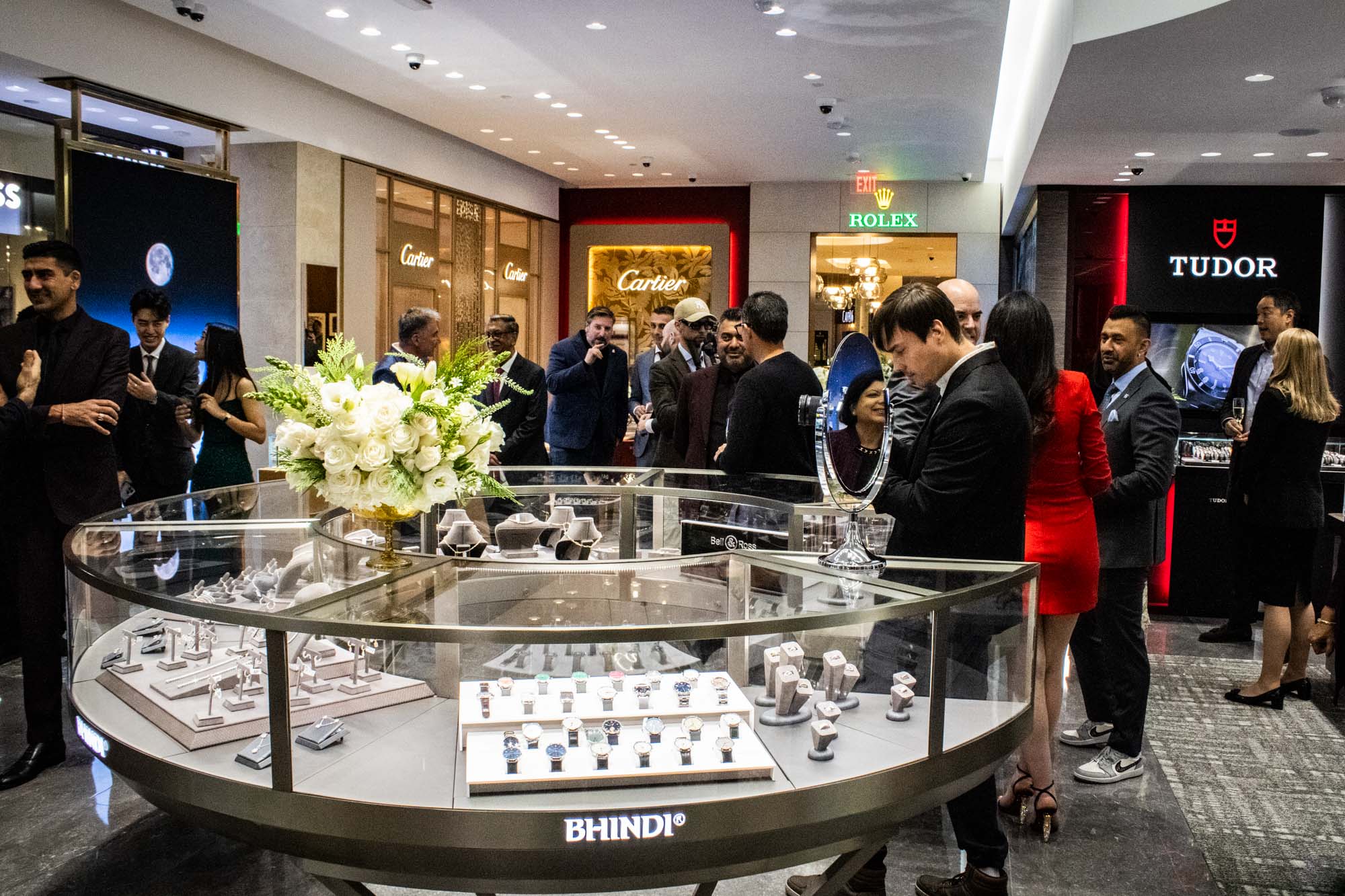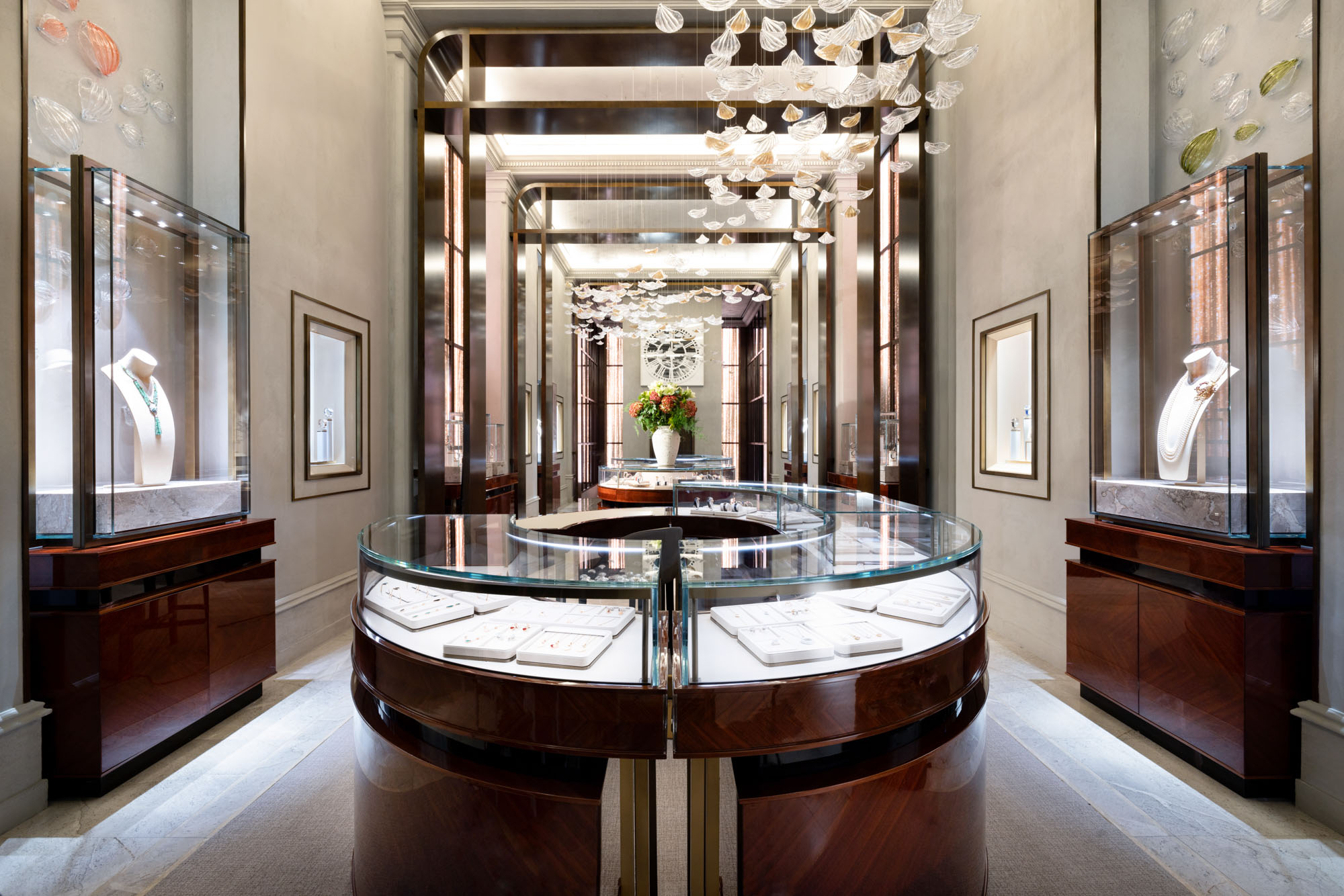
In the middle of 2024, one thing is very apparent about the otherwise unpredictable future of the luxury watch industry: The United States will lead as the world’s largest market for timepieces. By some accounts, America will lead global sales by what seems like a fair margin compared to other established countries and regional watch markets. This is all well and good, but a silent war that has been simmering for over two decades stands in the way of the United States luxury timepiece market reaching anywhere near its full potential.
The two combatants in the silent war are big-name luxury brands and independent retailers. Even though there is usually ongoing business between brands and retailers, an aggressive turf war for physical retail space and customer relationships continues between these two entities. Mind you, wise voices in the luxury watch space point out that watch brands and retailers should be very excited to mutually cooperate on market-building and growth. Instead of working with synergy, they cooperate skeptically. Not wanting to give any power to the other side, these two entities battle for dominance when it comes to who gets to do business with the end consumer. They also plot strategies to disrupt the other side, and carefully protect information and data from each other, even when they publicly refer to one another as “partners.” In short, many (but not all) luxury brands want independent retailers out of the way so that they don’t have to share sales profits with anyone. Retailers want to protect the wholesale model for selling watches, based on the legacy confidence that only local businesses will be able to adequately connect to consumers and communities in a way necessary to facilitate ongoing sales. The basic philosophical difference between these two parties is that one believes consumers are strictly interested in buying a product, and the other party believes that customers want service and to give their money to someone familiar who can be a celebration partner.
 The stakes couldn’t be higher, because the conflict between watch brands and retailers simply limits both investments and the necessary long-term approach to developing markets and educating consumer groups about brands and their products. For example, a retailer will not invest in real estate and marketing to sell a product it will soon lose the exclusive right to sell in a given territory. It has been a long-standing rule of American retailer strategy that if a retailer can exclusively sell in a region, it will invest heavily in marketing to consumers there. Once retailers feel their marketing activities will benefit a competitor, the retailers lose enthusiasm for the investment. This happens all the time in the watch industry, and it means that a standoff between brands and third-party authorized dealers simply results in a lack of effective branding and promotion in many key parts of the United States.
The stakes couldn’t be higher, because the conflict between watch brands and retailers simply limits both investments and the necessary long-term approach to developing markets and educating consumer groups about brands and their products. For example, a retailer will not invest in real estate and marketing to sell a product it will soon lose the exclusive right to sell in a given territory. It has been a long-standing rule of American retailer strategy that if a retailer can exclusively sell in a region, it will invest heavily in marketing to consumers there. Once retailers feel their marketing activities will benefit a competitor, the retailers lose enthusiasm for the investment. This happens all the time in the watch industry, and it means that a standoff between brands and third-party authorized dealers simply results in a lack of effective branding and promotion in many key parts of the United States.
Foreign luxury watch brands have always had a tumultuous relationship with the United States. Nevertheless, America has been an extremely important market historically for European luxury watch brands, including popular names such as Rolex and Patek Philippe. Arguably, neither of these companies would enjoy the market position they have today if it wasn’t for the American market during the 20th century. Yet, over the last couple of decades, the luxury watch world focused relatively little attention to expanding and developing retail reach in the United States. Instead, brands looked to developing markets and places with a reputation for less independent-minded consumers to grow their businesses. The most noteworthy example of this is China, where, for a number of years, luxury brands enjoyed impressive growth to an upwardly mobile consumer base eager to show off their success to peers with foreign luxury goods. After stark political and economic changes in China, this one golden territory for timepieces remains important but is hardly set up for growth or profit.
Part of the problem is the hunger for constant growth and profit. The entire problem of watch brands versus retailers only seems to have started once corporate interests became entangled with classic European watch brand names. Corporate interests want to increase company revenues and control, often to levels that do not bear any historical precedent, but levels that optimistic business people merely projected in spreadsheets. Forecasting models that removed third-party retailers from the sales equation made it appear as though “brands were leaving too much money on the table.” A common term used to refer to removing third-party retailers from the market is “margin recapture.” From the perspective of a corporation owning a luxury watch brand, the concept is simple: “if we don’t share with those guys we get to keep all the money.” Unfortunately, in practice, margin recapture schemes often open up brands to new liabilities and costs that these brands are typically loath to bear.
 Putting the amount of money watch brands anticipated to gain from cutting out retailers in perspective is important because it helps frame the issue. When selling products via wholesale to retailers, brands typically charge anywhere from about 50% to 65% of the retail cost of the watches themselves. That leaves about a roughly 50%-35% profit margin for retailers. The short list of expenses that a third-party retailer must assume in order to earn this margin includes at least the following: operating a physical store location that attracts buyers, hiring and training sales and service staff, investing in wholesale product inventory prior to it being sold to end-consumers, and local marketing and advertising activities. In other words, your average third-party retailer not only pays for a business designed to sell watches to consumers but also buys considerable inventory without assurances that customers will want to buy any of it. Third-party retailers thus assume a considerable risk, and take on considerable responsibility in exchange for their profit margins. Taking all of this into account, no expert I have ever spoken to feels that the traditional business model between watch brands and retailers subjected anyone to unfairness from the outset.
Putting the amount of money watch brands anticipated to gain from cutting out retailers in perspective is important because it helps frame the issue. When selling products via wholesale to retailers, brands typically charge anywhere from about 50% to 65% of the retail cost of the watches themselves. That leaves about a roughly 50%-35% profit margin for retailers. The short list of expenses that a third-party retailer must assume in order to earn this margin includes at least the following: operating a physical store location that attracts buyers, hiring and training sales and service staff, investing in wholesale product inventory prior to it being sold to end-consumers, and local marketing and advertising activities. In other words, your average third-party retailer not only pays for a business designed to sell watches to consumers but also buys considerable inventory without assurances that customers will want to buy any of it. Third-party retailers thus assume a considerable risk, and take on considerable responsibility in exchange for their profit margins. Taking all of this into account, no expert I have ever spoken to feels that the traditional business model between watch brands and retailers subjected anyone to unfairness from the outset.
For the most part, independent watchmakers and brands have no serious interest in bypassing the network of third-party retailers, mainly because these companies understand the risks and costs involved. Sure, these brands want more control of the sales process and want to reduce the practice of discounting as much as possible, but they realistically understand that their business is making desirable watches, not in the additional expenses and complexity of retailing them around the world to diverse customers. When online retail became popular, many watchmakers dipped their toes in selling directly to consumers. None that I know of did so well that they abandoned the third-party retailer model. In many instances, brands realized that the work of selling watches to finicky customers in a very competitive market was beyond the scope of their expertise.
Business grads with suits and spreadsheets are often not as intuitive as seasoned professionals who have experience in the market. Over the last couple of decades, there has been a prevailing ideology in boardrooms that numbers and metrics say it all. However, we know that numbers and metrics can be manipulated to say pretty much anything. Therefore, the desire to increase corporate profits beat the practical reality that selling watches is a very different business than making watches. That isn’t to say that no one made more money selling watches directly, rather than via wholesale. Probably one of the most notable examples is Richard Mille, which decided to end all third-party distribution and sell watches themselves entirely out of its own stores. Richard Mille does not have a model that anyone else has been able to copy and has a number of unique features that are not present in other companies. Richard Mille is also not corporate-owned and can make discreet decisions and maintain a degree of internal cooperation that other companies cannot. Richard Mille also produces a relatively small number of watches compared to other companies that have sought to replicate its success and model. The maverick nature of many luxury watch brand personalities (such as Mr. Mille who still runs the business) means that the timepiece space will always have outliers with unique business models that aren’t worth trying to copy. That doesn’t, however, stop people from using the success of Richard Mille as justification for their own direct-to-consumer ambitions.
I don’t want the purpose of this article to become a discussion of the merits of doing business with a traditional wholesale network or directly to consumers. I’ve discussed that at length many times and my opinion remains the same – that wholesale is best for most brands, but that some companies can indeed thrive by setting up the complex system needed to both make and sell timepieces. More urgent for this discussion is exposure to the ensuing fight that silently rages on the high streets between independent watch retailers and the brands they carry.
 When you speak to watch retailers from all over the United States, this topic is top of mind. These retailers have uncertainty hitting them from both sides. One side is the unsure nature of consumer confidence and the willingness to spend on luxury goods. It isn’t that retailers fear losing business to competitors, but rather that they fear ongoing global uncertainty will continue to drag on consumer behavior. The other uncertainty they have is related to the products they sell. What they worry about is if the brands they carry will decide to bypass them and open up a brand boutique in town. Alternatively, if the brands they work with will send them sellable goods, or force them to invest mainly in “B stock” (less popular models and products). In fact, the stress for retailers in America is so high, that they fear phone calls and letters from watch brands. What they most worry about is the dreaded conversation that informs them of their upcoming inability to sell products from a brand they have been offering to their consumers for years.
When you speak to watch retailers from all over the United States, this topic is top of mind. These retailers have uncertainty hitting them from both sides. One side is the unsure nature of consumer confidence and the willingness to spend on luxury goods. It isn’t that retailers fear losing business to competitors, but rather that they fear ongoing global uncertainty will continue to drag on consumer behavior. The other uncertainty they have is related to the products they sell. What they worry about is if the brands they carry will decide to bypass them and open up a brand boutique in town. Alternatively, if the brands they work with will send them sellable goods, or force them to invest mainly in “B stock” (less popular models and products). In fact, the stress for retailers in America is so high, that they fear phone calls and letters from watch brands. What they most worry about is the dreaded conversation that informs them of their upcoming inability to sell products from a brand they have been offering to their consumers for years.
Watch retailers in America haven’t always been the easiest to work with, and there are some legitimate grievances from the watch brands themselves. Watch retailers have a tendency to pay for goods late, and have been accused of “brand tarnishing behavior.” Brands like to complain that retailers don’t know how to explain or position their products and often do a poor job of getting new consumers excited about them. Retailers can get lazy and do have a tendency to mostly sell popular products that enjoy demand from expensive advertising campaigns and promotions – typically exclusively paid for by the brands. I can see how a watchmaker might come to the conclusion that a watch retailer is simply an over-paid point of sale that doesn’t help them sell, but merely offers a place for consumers to buy. This is a gross oversimplification of what happens in the market, but, indeed, business people at major brands don’t always appreciate what third-party retailers bring to the table. If brands believe that their marketing activities account for most of the demand generation their products enjoy, they will look at the value retailers bring them with skepticism until they try to replicate the retail process.
The biggest complaint watch brands have had historically is that watch retailers succumb to discounting practices too easily and that they maintain very little patience when it comes to stocking watches that take a long time to sell. The reputation of a luxury brand is closely tied to what people can expect to pay for their goods. When prices drop, an argument can be made that it tarnishes brand value. This again is a much more complicated and deeper discussion, but it is true that part of selling goods in America is discounting and moving through inventory quickly. My assessment of this situation is that watch brands rarely understand the practical realities of running a retail store in America, and thus demonize the practice of discounting without understanding why it happens. It helps to understand that in America, unsold inventory is a liability the longer it remains unsold, and the classic way for getting rid of unsold inventory is to discount it. In very rare situations will watch brands “buy back” unsold inventory from retailers. Instead, retailers have to “move” stubborn (hard to sell at retail price) inventory in order to make space for new inventory. Thus, in any retail context, discounting more or less has to happen in order to keep inventory in necessary circulation. This also falls into some of the cultural differences between retail businesses in America versus Europe.
 When watch brands open up their own stores in the United States, they rarely perform as well as third-party retailers. These stores persist, however, because brands feel as though they can call the shots (such as not allowing discounting as readily) and offer consumers a more educational and directed brand experience. The differences between visiting a mono-brand boutique and a multi-brand authorized dealer in America are apparent the moment you enter them. Consumers are not given the same experience at all and tend to still heavily prefer multi-brand environments. Probably the biggest value brought by a multi-brand retailer is being able to connect with the local community. These multi-brand retailers are often run and staffed by locals with an interest in service and community support. On balance, I would say that America would do better with more multi-brand stores as opposed to mono-brand boutiques if the goal is actual growth and increased market penetration.
When watch brands open up their own stores in the United States, they rarely perform as well as third-party retailers. These stores persist, however, because brands feel as though they can call the shots (such as not allowing discounting as readily) and offer consumers a more educational and directed brand experience. The differences between visiting a mono-brand boutique and a multi-brand authorized dealer in America are apparent the moment you enter them. Consumers are not given the same experience at all and tend to still heavily prefer multi-brand environments. Probably the biggest value brought by a multi-brand retailer is being able to connect with the local community. These multi-brand retailers are often run and staffed by locals with an interest in service and community support. On balance, I would say that America would do better with more multi-brand stores as opposed to mono-brand boutiques if the goal is actual growth and increased market penetration.
Where this issue is the most salient is in the expansion of the American market for watches. Outside of the US’s five or six major cities, the market for luxury timepieces is still very nascent. Small, independent brands often do well, because the larger names have no retail or marketing presence in dozens of otherwise cash-wealthy places in the United States. The decision of where to expand should be made by local business owners who have a sense of the culture and a taste for what precisely to retail. It is not merely a matter of seeing where other luxury stores are located, or trying to determine where rich people go for dinner (as is the typical strategy used by corporate firms when deciding where to open up a new store). The same logic applies to where and how to market. Advertising dollars are limited, and brands need precision strategies for how to spend money. Local business owners such as third-party retailers often have a good sense of where to effectively spend on marketing, whereas foreign decision-makers simply can’t operate with the same level of understanding and awareness.
The larger issue of retailers versus watch brands in America is deeply nuanced and involves a complicated weighing of factors and values. Neither side is inherently more or less correct than the other on all points. Where I have to side with independent retailers is that I believe America (or any local market) deserves the right to profit from luxury goods sold in those places. That means local companies and staff should be able to share in the profits they help earn for foreign companies. In many parts of the world (India is a good example), this is codified into law. Foreign companies more or less cannot do business in India unless local partners share in the profit. America’s more permissive stance on doing business does not strictly require this, but that doesn’t mean it isn’t prudent. What many luxury firms want is the enjoyment of doing business in America, without Americans themselves benefitting much. More so, the uniquely personal nature of selling a luxury good to a consumer in America means that luxury brands still need to co-opt local enthusiasm in order to make money. Corporate interests simply want to hire modestly paid sales staff and keep all the performance profits of sales for themselves, without appreciably sharing it with the local economy. For this reason, I have called this commercial strategy “business colonialism” where the goal is to funnel profits out of a host country and back to a home base. I just don’t think that is smart or ethical in many instances.
 As much as watch brands like to pretend they don’t need local sales support and retailers, most evidence suggests they do. Rolex, for instance, harbors no overt interest in taking over the risk that its network of third-party retailers assumes each time they buy inventory or invest in physical retail space. Rolex could afford it but intuitively knows that it is a bad idea to compete on that level.
As much as watch brands like to pretend they don’t need local sales support and retailers, most evidence suggests they do. Rolex, for instance, harbors no overt interest in taking over the risk that its network of third-party retailers assumes each time they buy inventory or invest in physical retail space. Rolex could afford it but intuitively knows that it is a bad idea to compete on that level.
Aside from having a bias toward wanting watchmakers to allow Americans to get rich with them, I don’t know how the fight between watch brands and independent retailers is going to play out. Watch brands continue to seek ways to evade working with profit-sharing partners, and independent retailers are entrenching themselves in prime real estate positions. These retailers may not know what brands they will sell in a few years, but they hope that their stores and locations are attractive to at least a few desirable luxury brands. This is a pretty poor state of affairs because it means those retailers will only purchase minimal stock, and invest minimally in marketing for a brand they have no assurances they will be able to sell for any long-term period of time.
What I know for sure is that something will have to change in order to remove this significant hurdle to growth and development in the world’s most important market for timepieces. As I tried to explain in the limited space of this article, there are a number of very real challenges to overcome between the people who make watches and the people who sell them if the United States market is going to reach is larger potential for luxury timepieces. I’ve made some concrete suggestions (such as increasing the exclusivity retailers have to sell brand products through lease-style agreements) about fixes that can be made, but ultimately what is needed is more frank and open discussions between the relevant parties involved. What do you think?

